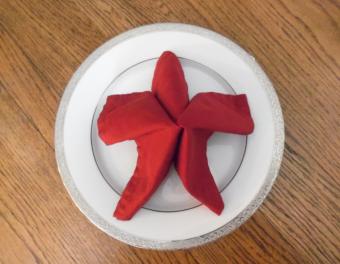
The history of modular origami dates back to the 18th century. However, as a form of art practiced the world over, modular origami began only a few decades ago -- in the 1970s. Indeed, it is within the last 30 years that the art form has truly taken shape.
Unlocking the History of Modular Origami
Modular origami, or unit origami, is a relatively new invention. Especially when you consider that origami has been around for over 1500 years.
As with all true origami, modular origami does not use adhesive or cuts. The entire module is folded and built through clever interlocking. The idea is to create a symmetrical model, a geometric shape that's the same from all sides.
Though there is evidence of modular origami as far back as 1734, the origami subset did not truly develop until the 1970s. The reason was the Sonobe Module.
The 18th Century
For modular origami, its earliest evidence is from 1734 and a book entitled Ranma Zushiki. Authored by Hayato Ohoka, the book contains decorative illustrations -- among them, origami models. Among the origami models is modular cube.
The 1960s
Fast-forward some 230 years and the same cube appears in Isao Honda's World of Origami, published in 1965. The model's appearance suggests that modular origami had remained part of the paper-folding tradition. However, it also suggests that not much experimentation had taken place -- up to that point. Within the next decade, all that would change.
Kusudama
When discussing the history of modular origami, it is also important to note the contribution of other paper folding techniques that made use of "units." The most well-known of these would be kusudama, which are paper flowers comprised of many pyramidal units. The difference between these models and true origami is that kusudama uses thread or adhesive. Yet, despite this difference, kusudama is generally regarded as a precursor to unit origami.
The Sonobe Module
As said, the launch of modern modular origami can be traced to one invention: the Sonobe Module.
Credited to Mitsunobu Sonobe, the Sonobe Module is a modular unit inherent with possibility. The design is a parallelogram with two tabs and two "pockets." Into these pockets, corresponding tabs of other Sonobe units can be inserted. The Sonobe Module, pictured above, is built out of 30 interlocking Sonobe units.
Building from the Sonobe Unit
Though Mitsunobu Sonobe is the recognized architect behind the Sonobe Module, another student of origami who took modular origami a step further. According to origami historian David Lister, it was actually Steve Krimball of the United States who took the Sonobe unit in 1976 and uncovered new ways to build with it. Nick Robinson in The Origami Bible makes a similar assertion. Suffice to say, the 1970s brought major breakthroughs in modular origami, providing the foundation for all models thereafter.
Examples of Modular or Unit Origami
The limits of origami appear boundless and modular origami is a perfect example. For over 1500 years, people thought they had mastered all the ways one could fold paper. Then came the Sonobe Module and a door was opened to hundreds… thousands of possibilities more. For instance, consider the designs by master folder Tomoko Fuse. Indeed, perhaps the best way to understand modular origami and to appreciate how far it's come -- is to go through examples.
To start, here are five to try:
- The Sonobe Module: Learn how to make the basic Sonobe unit.
- Robert Neale's "Magic Pinwheel": OrigamiNut.com has a pictorial, diagrams, and video on how to craft this classic 8-point star.
- Origami-Instructions.com: Step-by-step tutorials for the modular cube, pinwheel, and ninja star.
- Modular Origami Rings: Mette Pederson provides step-by-step instructions on how to build a modular ring. Parts 1 and 2.
- Origamee.net: This design gallery of unit origami includes dodecahedra, sonobes, and cubes. Also, find a selection of kusudama.







